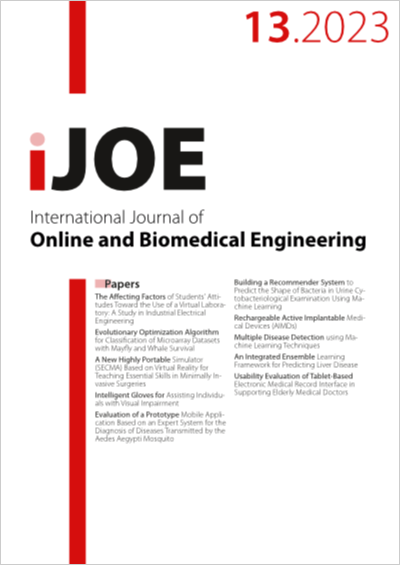The Affecting Factors of Students' Attitudes Toward the Use of a Virtual Laboratory: A Study in Industrial Electrical Engineering
DOI:
https://doi.org/10.3991/ijoe.v19i13.41219Keywords:
Virtual Laboratory, Students’ Attitudes Toward the Use, Perceived Ease to Use, Perceived Usefulness, IEE StudentsAbstract
Virtual laboratory (VL) has become increasingly popular in Post-COVID-19 to support practical learning in the remote learning system. The use of VL was responded to by students with different attitudes. This study discusses the factors that influence the perception of Industrial Electrical Engineering (IEE) students in responding to the use of the VL in the learning process of the Electrical Machines Practicum Course. Based on the technology acceptance model (TAM), students’ attitudes toward using VL (are influenced by perceived ease of use (PEU) and perceived usefulness (PU). At the same time, PU also acts as an intervening variable. The research involved IEE students of the Electrical Engineering Department, at Universitas Negeri Padang. Data collection was carried out by survey using a questionnaire. Quantitative data were analyzed using variant-based structural equation modelling (SEM), with partial least square (PLS) or PLS-SEM. The results showed a significant positive effect between PEU and PU from the VL used against A. PU’s role as an intervener was also positive in mediating the effect of PEU on A so it became more prominent. Thus, it can be concluded that PEU and PU are the factors that must be considered in choosing VL to be applied to a practical learning process in the remote learning system.
Downloads
Published
How to Cite
Issue
Section
License
Copyright (c) 2023 Doni Tri Putra Yanto, Ganefri Ganefri, Hastuti Hastuti, Oriza Candra, Maryatun Kabatiah, Andrian Andrian, Hermi Zaswita

This work is licensed under a Creative Commons Attribution 4.0 International License.


